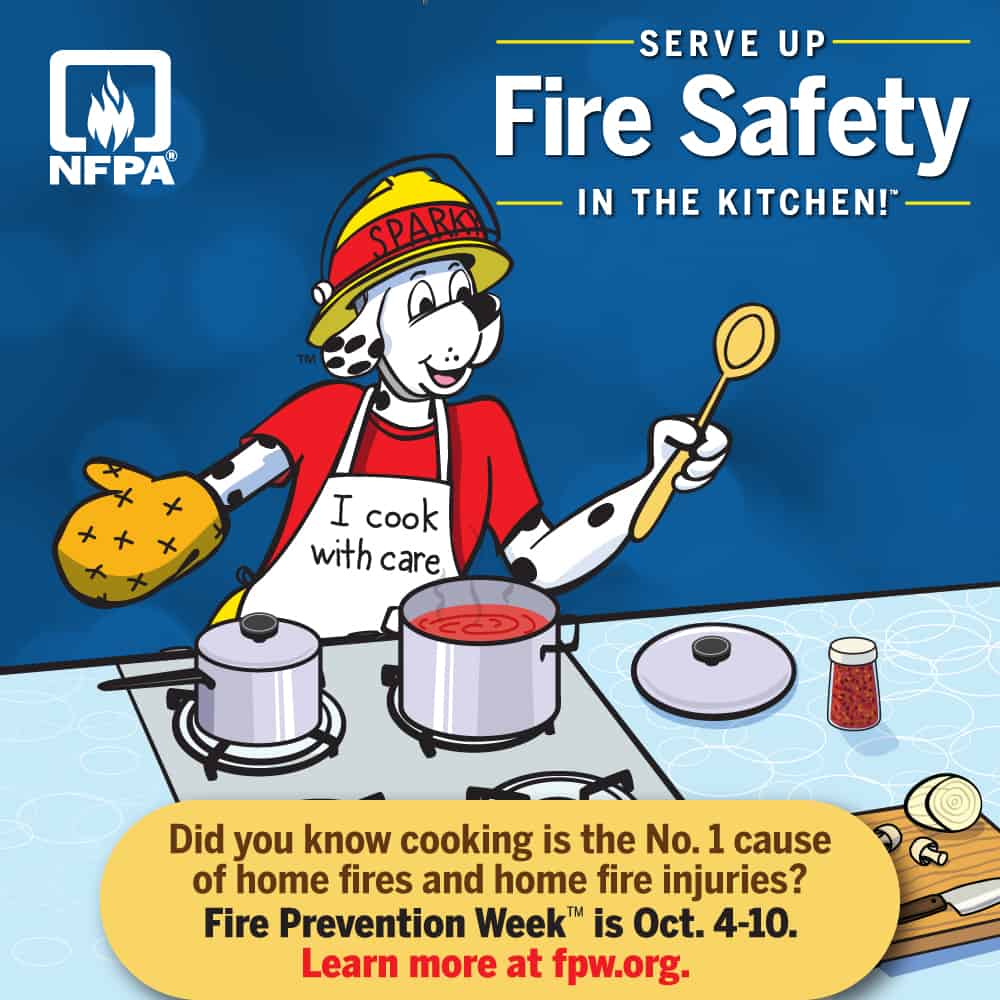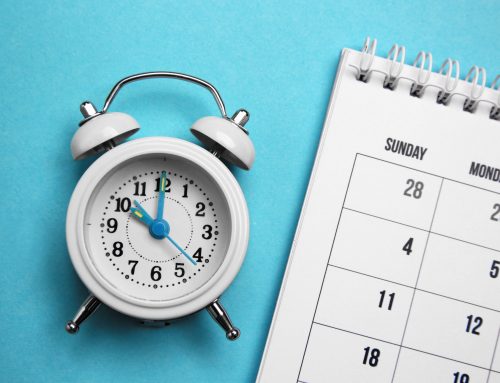Since 1922, the National Fire Protection Association (NFPA) has been the official sponsor of the Fire Prevention Week, an annual public health and safety observance. The purpose of this annual campaign is public awareness.
This year’s campaign will run from October 4th through October 10th, and is entitled “Serve Up Fire Safety in the Kitchen.” The focus will be on cooking fires. The focus of the 2020 campaign is quite timely considering so many Americans are spending more time in their kitchens and cooking at home as a result of the COVID-19 pandemic.
Startling stats
According to the NFPA, cooking is the leading cause of home fires and home fire injuries. U.S. departments responded to an estimated average of 172,900 home structure fires per year started by cooking activities between 2014 and 2018. These fires caused an average of 550 civilian deaths, 4,820 reported civilian fire injuries, and more than $1 billion in direct property damage per year.
The leading cause of fires in the kitchen is unattended cooking. Unattended cooking doesn’t just mean leaving the kitchen; it can also mean distracted cooking. Many people have the TV on while cooking, or talk on the phone, or scroll social media. These are distractions and mean that your attention is not on the food you’re preparing.
When it comes to the most dangerous times of the year for cooking-related fires, it’s no surprise that Thanksgiving takes the cake. In the U.S., Thanksgiving Day is the leading day for fires involving cooking equipment. Cooking equipment can be anything used in the kitchen to prepare or cook food ( toaster oven, air fryer, microwave, etc.). Ranges or cooktops are the most common cause for home cooking fires.
Cooking safety tips
The kitchen is by nature a dangerous space. There are many heat producing appliances, electronics, and of course, open flames. Treat your kitchen like the dangerous place that it is; with caution.
Here are a few tips for safe cooking from the NFPA:
- Stay in the kitchen when you are frying, boiling, grilling, or broiling food.
- If you are simmering, baking, or roasting food, check it regularly and stay in the home.
- Always keep a lid nearby when cooking.
- Have a “kid-free zone” of at least 3 feet around the stove and areas where hot food/drinks are being prepared.
These tips are even more important when hosting guests or having parties where the kitchen may become an area for socializing. Cooks may become easily distracted. Party guests may unintentionally knock something over, causing a fire. Keep the kitchen for cooking and designate another area of your home for entertaining.
Dangerous kitchen mistakes
We know that unattended or distracted cooking leads to fire. Other dangers, however, may be less obvious.
Grease fires are a major hazard in the kitchen, but many people don’t know what a grease fire really is, or how to put one out. A grease fire happens when cooking oil becomes too hot. When heating, oils will boil and then smoke and may then catch fire. To avoid grease fires, use a heavy pot with a lid and use a thermometer to monitor the temperature of the oil. If you notice too much smoking, reduce the temperature. To put out a grease fire, turn off the heat. Do not remove the pan from the heat. Cover the pot with a lid and pour baking soda on the fire. If you have a portable fire extinguisher in your kitchen, use the extinguisher if baking soda does not work or if the fire is too big. Call 911 and evacuate if the fire becomes out of control.
Another lesser known danger is simply what you wear when you cook. Loose fitting clothing can catch fire. Roll up your sleeves and avoid flowy or baggy fabrics when cooking.
Did you know that how you store kitchen appliances and how you use them can also be a kitchen danger? Overloading outlets is an example. If several appliances share an extension cord, this is a fire danger. Extension cords are actually not intended for permanent usage like you would have in a kitchen setting. The cords can also be a problem if they touch the sides of appliances or other sources of heat. Additionally, frequent inspections of cooking tools and appliances is important. You may miss a frayed cord, for example, until you go to use it. Set up your kitchen in a way that offers a lot of space between heat producing appliances. Don’t set decorative and flammable items on counter tops. And frequently check how things are plugged in and arranged to avoid electrical fires.
Preventative measures you can take
In addition to kitchen safety tips to prevent fire, it’s important to note preventative measures should a cooking fire occur. These measures include smoke alarms, portable fire extinguishers, and automatic sprinkler systems.
Smoke alarms save lives. Smoke alarms are sometimes the only way a homeowner knows a fire has broken out and therefore an incredibly important life saving device. Alarms should be installed in every bedroom, outside of each bedroom, and on every level of the house. Test smoke alarms every month and change batteries as needed. The NFPA reports that working smoke alarms cut the risk of dying in a home fire in half. More than one-quarter of the people killed by cooking fires were sleeping at the time.
Another preventative measure would be a portable fire extinguisher kept in the kitchen area. Fire extinguishers are available at most hardware stores and can be mounted on a wall or kept in a cabinet. Use fire extinguishers for fires that are not safely extinguished by water. If a fire becomes too large to manage with a handheld extinguisher, exit the home and call 911 immediately. Do not try to fight the fire yourself. More than half of the non-fatal injuries reported by the NFPA’s most recent report on home cooking fires occurred when people tried to control the fire themselves.
Finally, some homes today are equipped with automatic sprinkler systems like you would find in commercial buildings. If you live in an apartment or condo, you likely already have an automatic sprinkler system as it’s required per fire code in most areas of the country. If your home is not equipped with a sprinkler system, you can hire a professional to install a system. Just like a smoke alarm, a sprinkler system is activated by smoke/heat from fire.
What can I do to stay safe in my kitchen?
Following fire safety tips in the kitchen, using preventative measures, and making cooking safety a priority in your home are the best ways to stay safe while cooking in your kitchen. Beyond these actions, a home fire escape plan is another important safety measure.
To create an escape plan, consider the following:
- Map out your home in an easy to follow way, noting doors and windows
- Create two ways out of each room
- Have a plan on how to help older, disabled, or younger children escape
- Teach children who are older how to escape on their own
- Establish a meeting place away from the home (like the mailbox or neighbor’s yard)
- Teach stop, drop, and roll
- Practice your plan and remind your family to never reenter the home even to save pets






